Iranian Exiled Prince Calls For More Protests On Tuesday
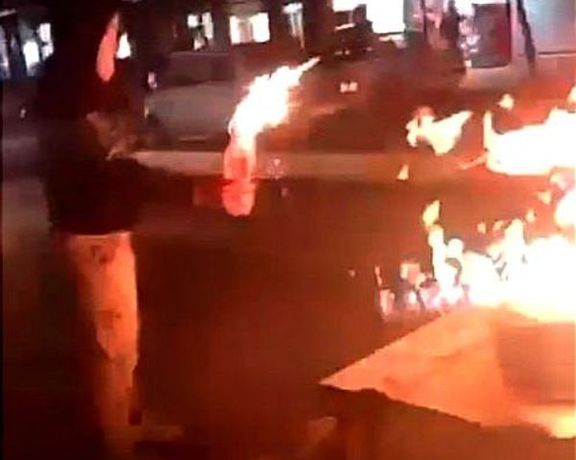
Exiled Prince Reza Pahlavi has called on Iranians to stage anti-regime rallies on the the ancient fire festival Tuesday to show that the protest movement is strong.

Exiled Prince Reza Pahlavi has called on Iranians to stage anti-regime rallies on the the ancient fire festival Tuesday to show that the protest movement is strong.
In a tweet on Monday, Reza Pahlavi said “the fire lit up in our hearts will never die”, asking people to take to streets to show anger at the clerical rulers once again.
Young activists' groups had called since late February for three nights of protests, including the Charshanbeh Suri fire festival on Tuesday, preceding the Iranian New Year next week.
“In the year that is coming to an end, hundreds of brave Iranians sacrificed their lives for the liberation of Iran. We are obliged to keep up on the path,” he added.
His statements come after young Iranians took to the streets in several cities Monday as the first night of protests. Young people use fire crackers and lit bonfires to mark the festival.
Abbas Ali Mohammadian, the police commander of Tehran has warned that "the police will use the capacity of mosques and public groups" to prevent the celebrations in the streets.
The fire festival is celebrated on the eve of the last Wednesday of the year, just before the New Year (Nowruz), which marks the day of the Spring Equinox. The festival dates to pre-Islamic times and for the same reason, its celebration is considered as a pagan practice by the clerics running the country since the Islamic Revolution in 1979.
Celebration of ancient festivals such as Nowruz and Charshanbeh Suri have persevered despite the many efforts of religious fundamentalists who tried to obliterate and replace them with Islamic feasts.
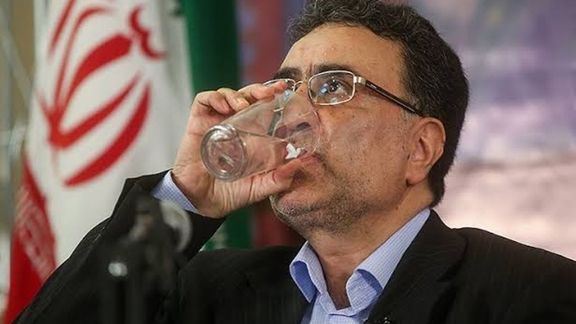
Jailed reformist activist Mostafa Tajzadeh says his cell was raided by prison guards because he is supporting a referendum to change the constitution in Iran.
In an open letter from prison addressed to Supreme Leader Ali Khamenei, Tajzadeh said that his cell, which he shares with two other political prisoners – Saeed Madani and Hossein Razzagh -- was attacked because all three expressed support for the proposal by opposition figure Mir-Hossein Mousavi for the referendum. Tajzadeh, a former deputy minister, protested that during “the unusual and long search” security forces confiscated some of his and Madani's personal notes.
Tajzadeh and his cellmates, as well as a few other political prisoners, including Faezeh Hashemi, the daughter of Iran former president Akbar Hashemi Rafsanjani, issued a statement in February, saying, "they will do their best to advance this proposal and a peaceful and non-violent transition to a completely democratic and developed Iranian structure." “The only way out of the impasse for the government is to surrender to the right of the people to determine their own destiny,” read the statement.
In his letter to Khamenei, Tajzadeh said, "You repeatedly claim that your opponents have the right to criticize you,” but "I have been sentenced to a total of 15 years in prison in two cases for criticizing your performance.” "Why are you so afraid of a referendum”, he asked Khamenei, underlining that confiscation of personal notes is a clear violation of laws and regulations of the country’s Prisons Organization.
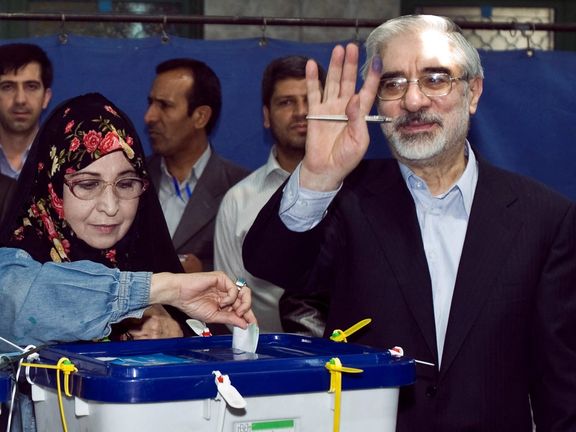
In a statement early in February, Mousavi, a presidential candidate in 2009 who became an opposition figure and was put under house arrest, said Iran needs “fundamental change” based on “Woman, Life, Freedom” and a referendum on the constitution. Since he published the statement, his house arrest has become stricter. Mousavi was put under house arrest in 2011 because he challenged the highly suspicious presidential re-election of Mahmoud Ahmadinejad in 2009.
Referring to government violence against protesters, Mousavi said the rulers of the Islamic Republic are not willing “to take the smallest step to meet the demands of the people.”
Mousavi implicitly repeated what exiled Prince Reza Pahlavi and other opposition figures have been demanding since last September, when the ‘Women, Life, Freedom movement’ started following the death in custody of 22-year-old Mahsa Amini – transition from the Islamic Republic. Pahlavi has acknowledged Mousavi’s call for a referendum
Iranians have been hotly debating the need to form an opposition council to manage the protest movement and plan for transition to a new form of government. After months of unorganized opposition to the regime concurrent with protests and strikes, prominent activists abroad united and established a framework of coordination. Inside the country no such move is possible because of repression. The group, which calls itself the Alliance for Democracy and Freedom in Iran, announced its existence in February.

Earlier in March, they issued a Charter of Solidarity and Alliance for Freedom, also called the Mahsa Charter.
Exiled Prince Reza Pahlavi, Nobel peace prize laureate Shirin Ebadi and Canada-based activist Hamed Esmaeilion, as well as US-based author, journalist and women’s rights activist Masih Alinejad, actress and activist Nazanin Boniadi and Secretary General of Komala Iranian Kurdish party Abdullah Mohtadi say the charter would lay the foundations for realizing the aspirations of protesters in Iran and gain international support for isolating the Islamic Republic.
The charter has been met with admiration and support as well as antipathy and criticism. Some people have denounced the charter saying it is not patriotic enough. However, the prominent opposition figures have called on people to put differences aside, saying that the charter is only a framework and a starting point for cooperation.

Young Iranians took to the streets in several cities Monday after a call for three nights of protests, including the celebration of the ancient fire festival Tuesday.
Videos posted on social media show small groups of youth marching and chanting anti-government slogans in some neighborhoods of the capital Tehran, Mashhad, Qazvin, and Malayer. A few videos show burning trash bins and car tires on the streets and youth throwing firebombs at government buildings and banks.
Youth groups had called since late February for three nights of protests, including the Charshanbeh Souri fire festival on Tuesday. In its social media posts, the United Youth of Iran, an alliance of various “neighborhood youth” groups from around the country fighting to overthrow the regime, urged everyone to form “neighborhood-centered” groups and take to the streets to protest.
The group vowed in a statement to turn the fire festival into a “symbol” of battling the “suppressive and criminal regime” and “the reactionary Islamic culture” that “has eliminated or harshly suppressed individuals for their different beliefs for many years.”
Protesters in Malayer in Hamedan Province chanting “Death to the Dictator” and “Death to Khamenei”
The fire festival is celebrated on the eve of the last Wednesday of the year, just before the New Year (Nowruz), which marks the day of the Spring Equinox. The festival dates to pre-Islamic times and for the same reason, its celebration is considered as a pagan practice by the clerics running the country since the Islamic Revolution in 1979.
Celebration of ancient festivals such as Nowruz and Charshanbeh Souri have persevered despite the many efforts of religious fundamentalists who tried to obliterate and replace them with Islamic feasts.
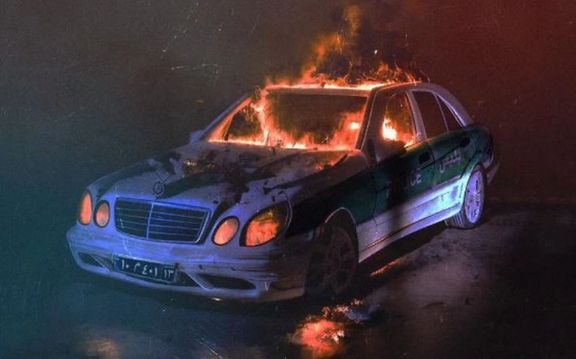
Nowruz is still the most important calendar event of the year and celebrated as always, but Charshanbeh Souri has taken a quite different character. Authorities resorted to harsh measures to suppress its celebration in the streets, often bringing out the police, Basij militia, and vigilante groups who clashed with the youth and even arrested them for lighting bonfires.
Protesters in west Tehran chanting a slogan against Supreme Leader Ali Khamenei
Ancient Iranians lit fires on their rooftops during the last five days of the year to help the spirits of the dead to find their way and reunite with their families.
In more recent times, people made several small brushwood fires in their courtyards or outside the house and jumped over the flames chanting, “Take away my sickly pallor and give me your red glow! ” Firecrackers were also popular with the children and youth.
Jumping over fire was followed by a host of traditions including lighting candles, singing, dancing, poetry recitation, going door to door and banging on bowls with spoons to get treats, and sharing food.
Small firebomb thrown at a university campus entrance in west Tehran for housing security forces and providing them with a place for keeping detainees in previous protests as “warning”.
Over the years, massive bonfires and small homemade bombs have largely taken the place of brushwood fires and firecrackers. Streets often turn into battlegrounds between the dancing and merrymaking youth and the police on the last Tuesday of the year.
In a statement Tuesday, the ministry of intelligence said it had arrested members of terrorist teams” across the country including twenty-one members of a group linked with the Mujahedin-e Khalq Organization (MEK) in Tehran and confiscated a variety of explosives from them.
Those arrested were planning to set fire to public property such as buses, the ministry claimed and vowed to take decisive action against “terrorists” who, it said, aim to harm people and “cast the blame for their criminal actions on the security forces.”

Iran's judiciary chief says 22,000 protesters arrested since unrest began in September, have been pardoned.
“Out of these people, 22,000 had been arrested or convicted during the protests,” he admitted, the first such admission from the Islamic Regime as to the true extent of the thousands of arrests since the death of Mahsa Amini in morality police custody triggered nationwide revolution.
It is believed it is a move to pacify the population before the start of the Holy Month of Ramadan after demonstrations have seen well over 500 civilians killed in clashes with the country’s security forces imposing brutal anti-protest crackdowns.
Mohseni-Ejei told state media that some of those being pardoned were in prison but most were either on bail, or their cases had simply not been closed yet. He did not specify over what period the pardons were granted.
The announcement also came ahead of next week’s celebration of Nowruz, the Persian New Year. On Tuesday, some in Iran also mark nearly 4,000-year-old Persian tradition known as the Festival of Fire that’s linked to the Zoroastrian religion. Hard-liners discourage such celebrations, viewing them as pagan holdovers.
There had been calls for anti-government protests around both events. While mass demonstrations have cooled in recent weeks, nightly chants against Iran’s theocracy can still be heard in some neighborhoods of Iran’s capital, Tehran.
In February, Iran’s supreme leader pardoned "tens of thousands" of prisoners including some arrested in protests.
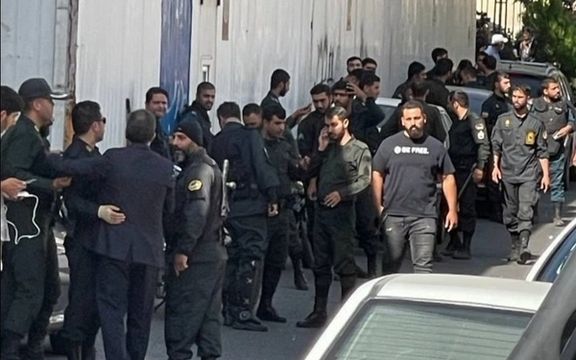
The UN special rapporteur on human rights in Iran has released his latest report, portraying the grim situation of protesters and the regime’s bloody crackdown.
In his latest report released to media on Friday, Javaid Rehman briefed the UN human rights council at its 52nd session on the events leading up to and since the death of Jina Mahsa Amini in September, highlighting the most pressing human rights concerns up to December 31.
Rehman expressed regret that the Islamic Republic authorities continue to deny him entry to the country and reiterated his request to carry out visits to the country in accordance with the Human Rights Council resolution establishing his mandate.
The Special Rapporteur deplored the brutal response of the Iranian authorities to the protests, saying the unabated violent response by security forces reportedly led to the deaths of at least 476 persons, including at least 64 children and 34 women, 5 hundreds of protesters being severely injured and thousands being arrested, detained or incarcerated.

His report is derived from many submissions and multiple online and in-person meetings with victims of the human rights violations, their families and lawyers, civil society and human rights organizations, government officials, media and other relevant stakeholders.
“The violent state response to the protests started immediately following the death of Jina Mahsa Amini, contrary to the reports by Iranian authorities, which claim that security forces were instructed to act with tolerance and restraint,” read the report, adding, “On the contrary, directions given by the highest state authorities point out a deliberate policy to crush protests at all costs.”
“Videos, reports and eyewitness testimonies have shown security forces (including the police, the Islamic Revolutionary Guard Crops and the Basij militia) violently cracking down on protesters and have revealed a widespread pattern of unlawful lethal use of force, including the use of shotguns, assault rifles and handguns against the protesters,” it added.

The report also said that there is evidence of deliberate killings in many cases, with security forces shooting at individuals at close range. It mentioned Minoo Majidi, a 62- year-old mother, who was shot by security forces with 167 shotgun pellets in Kermanshah and died on her way to hospital and Hadis Najafi, a 23-year-old woman who died during a protest in Karaj on September 21 after being shot multiple times in the heart, abdomen and neck.
Highlighting that at least 64 children were reportedly killed by security forces in the protests, the report mentioned some of the cases such as four girls and one boy who were beaten to death, including two 16-year-olds, Sarina Esmailzadeh and Nika Shakarami and 15-year-old Sarina Saedi from Sanandaj and a 16-year-old boy Mehdi Mousavi Nikou.
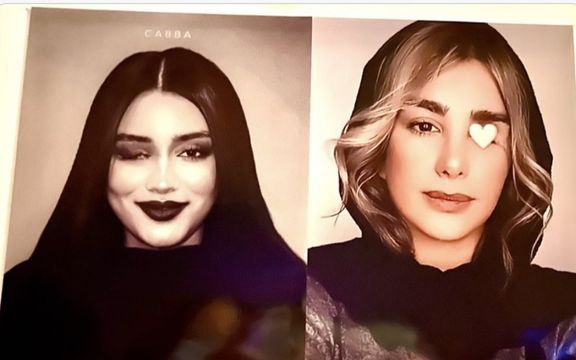
Ethnic and religious minorities who have suffered decades of systemic and systematic discrimination and persecution have been disproportionately affected in the current wave of repression with over half of the total number of those killed being from Baluchi and Kurdish-populated provinces, the report said, noting that children from the country’s Baluch and Kurdish minorities constitute 63 percent of the recorded child victims.
Expressing concern over the large number of protesters severely injured because of direct shots to the head, Rehman said that hundreds have reportedly suffered severe eye injuries or lost their eyesight due to the use of metal pellets and rubber bullets by the security forces but did not seek medical care from government facilities in fear of reprisals, torture and detention.
The Special Rapporteur also expressed deep concerns about the policy of mass arbitrary arrests and detention of protesters, that led to the arrest of more than 18,000 individuals, of whom the identity of 2,942 individuals has been confirmed.
The report also underlined the harassment of families and cover up of human rights violations and violations of the right to due process and fair trial. “The Special Rapporteur is alarmed at the execution of two protesters and the reported sentencing to death of several others after sham trials, violating the right to a fair trial and denying the right to due process,” it said.
Paying tribute to all those who have continued to communicate information despite the heavy risks, Rehman said the regime’s so-called investigations into the death of Mahsa Amini were neither credible nor transparent and have failed the minimum requirements of impartiality and independence.
The report concluded that since the start of the protests, the highest authorities of the regime have instigated violence and instructed the security forces to “confront the enemies”.

Iran's state television aired the so-called ‘confessions’ of a man and his daughter arrested and accused of attacking schools in southern Iran with N2 gas canisters.
The video first shown by the local channel of the state broadcaster (IRIB) in Fars Province in southern Iran showed a girl sitting with her back to the camera being interrogated by a man. Authorities routinely arrange for forced confessions on TV.
The girl says in the video that she obtained the nitrogen gas canisters from a friend and together with her father, a hospital worker, threw them in the courtyards of seven different schools and went to hospitals to film the victims to post the videos as Instagram stories and posts.
For three months, girls’ schools have been targeted by unknown people with some kind of chemical agents, sending hundreds of students to hospital. The government has not arrested the real culprits of the large-scale operation.
Authorities who initially tried to attribute the children’s illness to psychogenic factors have so far not released any details about the chemical agents used in school attacks across the country, which some poisoned students have described as smelling like putrid fruit, or shown any canisters or other vessels used for holding these chemicals.
Many ordinary Iranians have been suspicious of involvement of the regime itself, or religious extremists protected by the regime, in the school attacks and call the acts “state terrorism”.
IRIB news bulletin including forced statements of a young woman arrested for school attacks in Larestan
“I tagged Iran International TV,” the unnamed girl tells her interrogator in the video shown by the state television and claims that by reporting the incidents she wanted to cause negative feelings about the regime in people’s minds.
On Monday, for the first time since the first attack Supreme Leader Ali Khamenei addressed the issue. “If there are really hands at work, or individuals or groups that are involved in this, this will be a huge crime that cannot be overlooked,” he said, adding that culprits should be given maximum punishment for their crime.
The interior ministry in a statement Wednesday said some individuals had been arrested in Khuzestan, West Azarbaijan, Fars, Kermanshah, Khorasan and Alborz provinces. No one has yet been arrested in the religious city of Qom, where the first attack was reported on November 31. Since then, 29 more schools have been attacked in the same city.
Victims of school gas poisoning attacks outside a school in Larestan Monday
Spokesman of Law Enforcement Forces (Faraja), Brigadier General Saeed Montazerolmahdi, said Friday that a team of two men, 50 and 22, and three girls including a 21-year-old who still attended high school, were arrested for the poisonings in Larestan, for which the girl was made to confess on television.
The police chief alleged that the accused had also made recordings of the school attacks and sent it to “hostile media including Iran International TV”. He claimed that the accused girls confessed they wanted to create an atmosphere of insecurity in schools and defame the Islamic Republic.
On Thursday the head of the justice department of Kordestan Province, Seyed Hossein Hosseini, said authorities had arrested five “leaders and top members of networks” involved in “spreading rumors and lies” and arrest warrants were issued.
Instead of arresting the perpetrators, the police has been detaining journalists and citizens for speaking out about the chemical attacks.
The Revolutionary Guards (IRGC) linked Tasnim News Agency also reported on Friday that an Instagram influencer with 700,000 followers was arrested in Urumieh.
Quoting unnamed “informed sources, Hamshahri Online said the influencer was arrested for “spreading rumors about students’ poisoning” and causing feelings of apprehension among citizens through Instagram stories.